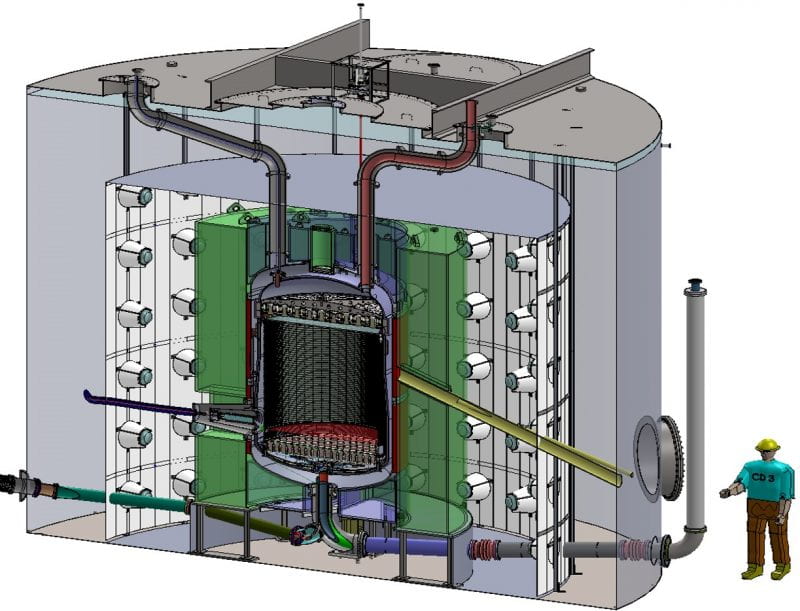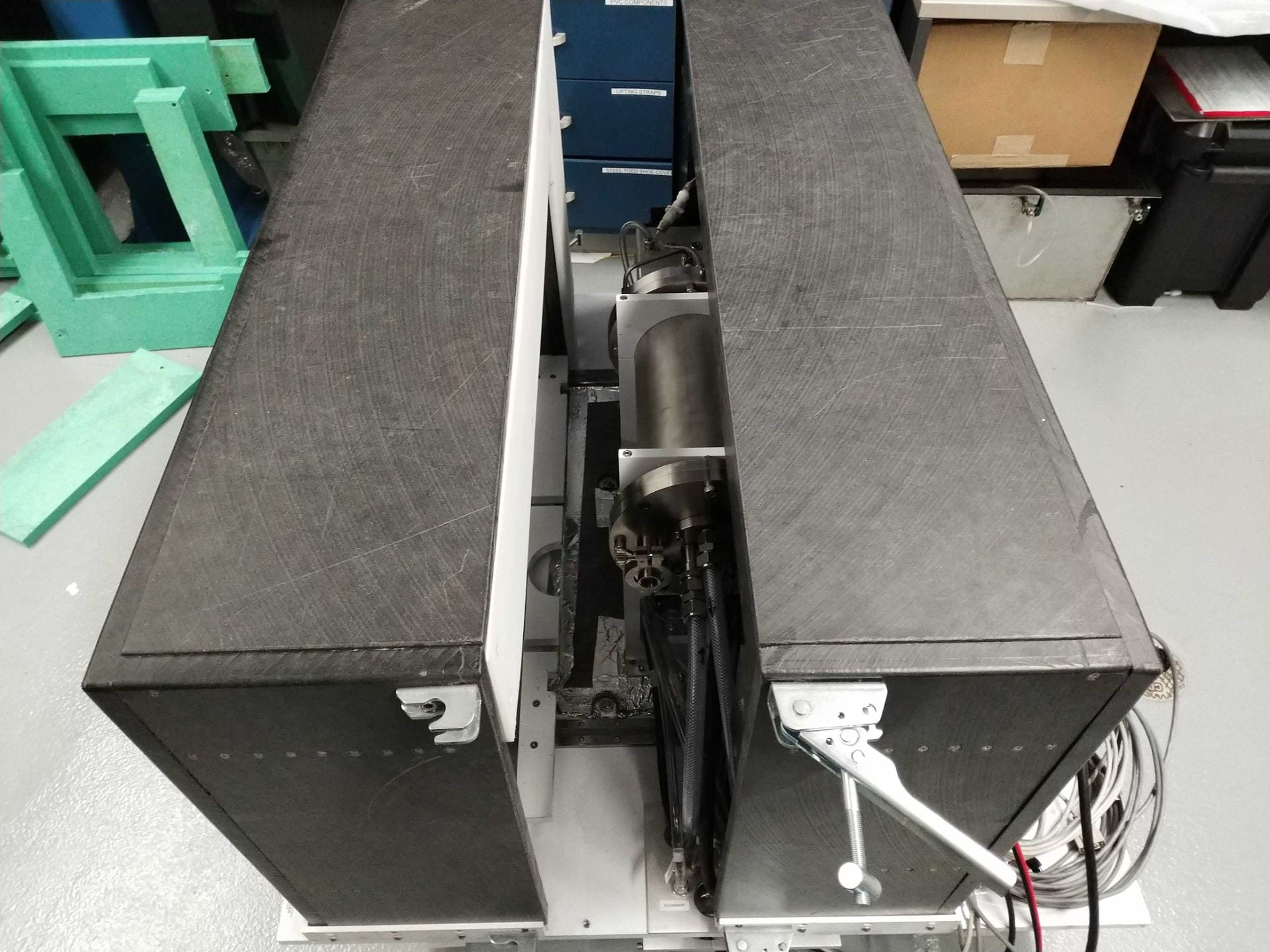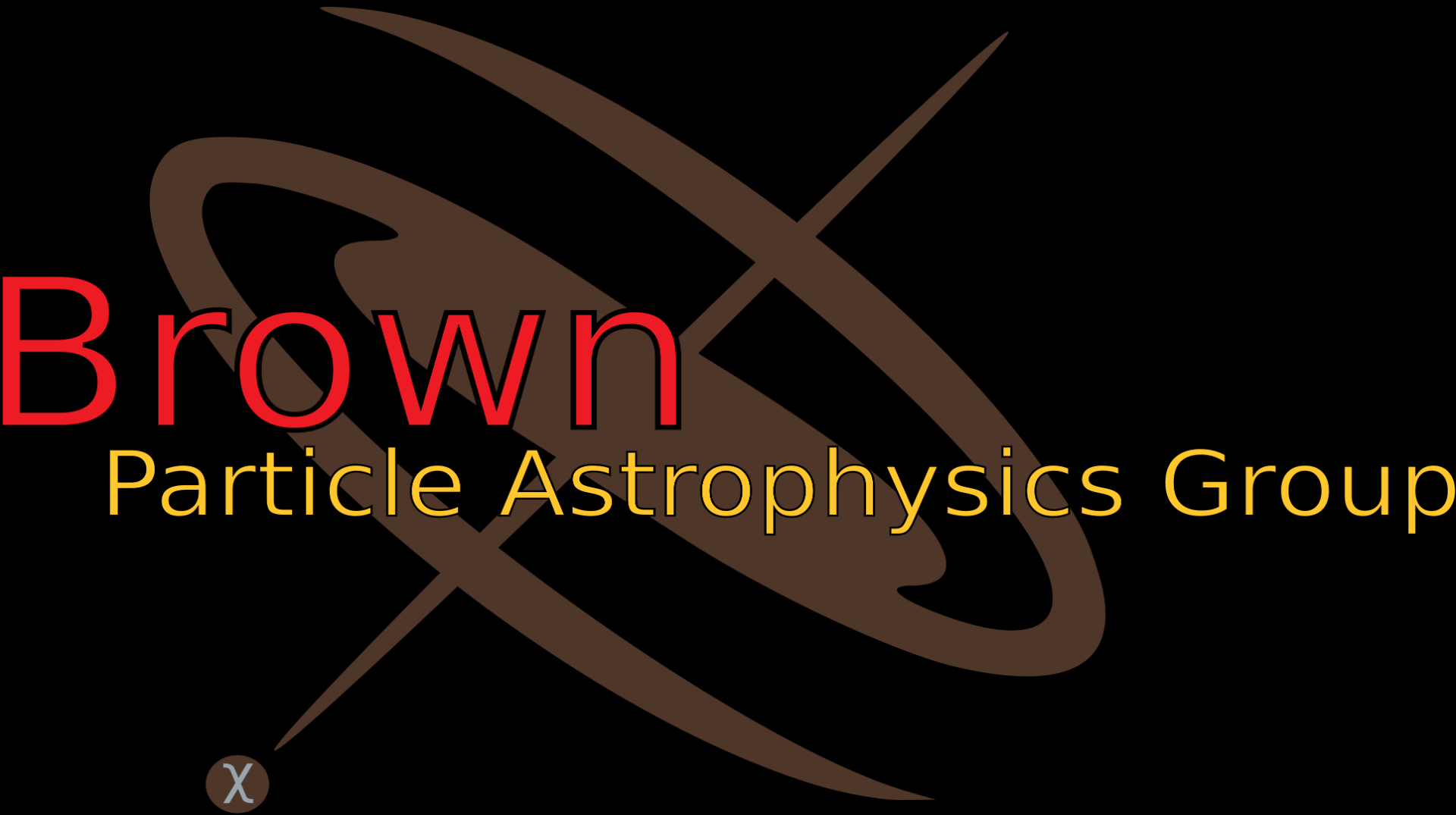Research

Current Research: LZ Dark Matter Experiment
The Brown Particle Astrophysics group is focused on direct detection of dark matter. To this end the group performs R&D on low background, rare event search experiments. Currently the Particle Astrophysics group is an active member in the LUX-ZEPLIN Dark Matter Search Experiment (LZ Experiment). The goal of LZ is to detect energy depositions caused by galactic dark matter particles known as WIMPs (Weakly Interacting Massive Particles) scattering off of atomic nuclei. LZ is a two-phase xenon Time Projection Chamber (TPC) detector, which will employ a 7-tonne liquid xenon target to search for the rare interactions of WIMPs with ordinary atoms in the detector medium.
The site for LZ is the Davis Laboratory at the 4850 ft. level of the Sanford Underground Research Laboratory (SURF) at the Homestake Mine in Lead, SD. The detector is housed in an 8 m diameter (300 tonnes) water tank that acts as a background shield and muon veto. LZ also employs an outer liquid scintillator detector as an additional veto system, particuarly against wayward neutrons, which mimic the expected dark matter signal.
The Brown Particle Astrophysics group is reprising the role it had from LUX as PMT system experts. LZ uses 494 Hamamatsu R11410 3″ photomultiplier tubes (PMTs), each of which went through a thorough screening and testing program at Brown. Each PMT was then assembled into the top and bottom PMT arrays for LZ in a class-100 cleanroom run by the group. LZ’s sensitivity requirements are so stringent that dust must be limited to 500 nanograms per square centimeter on the detector component surfaces. After 9 months of intense and careful work, both arrays were completed and shipped to SURF, where they were retested at the surface laboratory. The arrays then begin the integration process with the rest of the detector systems.
The Brown Particle Astrophysics group will also be repeating the nuclear recoil calibrations as performed in LUX. The group is working with Adelphi Technologies, Inc. to improve the performance of their deuterium-deuterium (DD) fusion generators, which produce monoenergetic neutrons. These neutrons are used to mimic the hypothetical dark matter signal and calibrate the detector.
TPC construction was finished in October, 2019, and the TPC was moved underground, where the remaining infrastructure and detector systems will be installed around it.

A CAD image of the detector. The outermost structure is the water tank. Within the water tank is a Tyvek wall equipped with 120 8-inch Hamamatsu R5912 PMTs. The 8-inch PMTs look for light emitted by the external liquid scintillator veto system, known as the outer detector and shown in green. The liquid scintillator used is gadolinium-loaded linear alkylbenzene, and it serves to identify and characterize the background.
At the center are the cryostats and TPC, which are filled with liquid xenon. The angled conduit on the righthand side of the image is one of the neutron conduits used by Brown’s neutron generator system to calibrate the nuclear recoil response of the detector. Neutrons are produced outside the water tank and travel down the conduit to reach the detector.
PMT Testing Program
The Particle Astrophysics group plays pivotal roles in many key aspects of the experiment. The group ran a two-year testing operation in which all 494 PMTs were tested multiple times at both room and LXe temperatures to ensure consistency and durability in the PMTs, as well as to fully characterize each individual PMT response. Additionally, each PMT was screened for radioactivity to ensure materials with low-radioacivity were used and to inform the LZ background contribution from PMT radioactivity.
Once the testing phase was complete, the group assembled the PMTs into their respective arrays within a class-100 cleanroom operated and maintained by the group. During the assemnbly, Brown group memebers became collaboration experts on cleanliness protocols and techniques. Finally, the group designed the LED calibration system which will be used in LZ to calibrate PMT response and check vacuum integrity.
Neutron Generator Calibrations
The group is also in charge of the DD neutron generator calibration system. An Adelphi Technologies, Inc. DD109 neutron generator is used to produce mono-energetic neutrons, which serve as an excellent calibration source for nuclear recoils in the liquid xenon – the same signal expected from dark matter. In addition to designing and simulating the full calibration system, the group is pioneering new techniques to allow calibrations lower in energy than previously achieved.
Brown pioneered the use of such a generator in LXe TPCs with their work in LUX. The monoenergetic nature of the neutrons produced by the generator provided the best nuclear recoil (NR) measurements ever done at the time by significantly reducing the systematic error associated with reconstructing the energy of each event, and so the goal is to make even more improvements on the technique in LZ.


PMTs being inserted into the lower PMT array during it’s construction phase at Brown.
The Adelphi Technologies, Inc. DD109 neutron generator that will be used in LZ. Neutrons are produced via deuterium-deuterium fusion inside the metal chamber in the center. It is surrounded by gray borated polyethylene shielding.
Past Research
The group was a major contributor to LZ’s predecessor – the LUX Dark Matter Experiment, with particular emphasis on Monte Carlo simulations, material radioactivity screening, PMT testing and deployment, digital electronics, data processing and data analysis.
The LUX detector was comprised of 370kg of liquid xenon, 250kg of which defined the active region observed by 122 Hamamatsu R8778 2-inch diameter photomultiplier tubes (61 in the top array, 61 in the bottom array).
The LUX Photomultiplier Tube program was developed and implemented by the Brown Particle Astrophysics group. This included testing the PMTs in liquid xenon, monitoring the health of the PMTs over time and performing gain calibrations using LEDs. This testing formed the foundation of our work on the LZ PMTs.
The data acquisition system (DAQ) in LUX was designed and implemented by the Particle Astrophysics group. The DAQ for LUX was unique in that it recorded only the interesting parts of the particle interaction. This prevented unwanted baseline from dominating the data stream and compromising the live time of the DAQ. This data was then analyzed and parameterized to distinguish WIMP candidate events from unwanted background.
The Particle Astrophysics group also hosted the primary data mirror for LUX data and played a key role in developing and maintaining the data processing framework. By the end of LUX, the group maintained nearly 1 petabyte of data. Additionally, Brown’s Center for Computation and Visualization (CCV) was the primary processing center for all LUX data and contributed many millions of CPU-hours.
The LUX detector was assembled on the surface at Sanford Lab in 2010-2011, where it was successfully operated with all systems. It was then moved 4850 feet underground in 2012, and operated there starting October 2013. The first dark matter search results coming out of it were released publicly on October 30, 2013. A second dark matter search run began in 2014 and ran until 2016, collecting a total of 330 live-days of dark matter data, with numerous calibration runs interspersed throughout.
LUX was decommissioned and deconstructed between Fall 2016 and Spring 2017. An exhibit featuring the titanium cryostat and example PMT from LUX is on display at the Visitor’s Center in Lead, SD.
Prior to LUX, professor Richard Gaitskell and his team were active members in the CDMS experiment, as well as the XENON10 experiment, both of which produced extremely competitive WIMP sensitivity limits.
